
Go to hell,” says Gale. The usually cocksure wizard and optional player character of Baldur’s Gate III stares down the flames of the party’s campfire. This is a man whose leather-bound chest conceals a Netherese Destruction Orb which, given time to count down, will produce a nuclear-level explosion, ripping him apart – yet he still gets up every morning to turn a phrase and find his next spell. Tonight, though, he’s brooding. The events of the last three days have given even him cause for concern. “Go to hell,” he repeats. “It’s an everyday expression. So trivial it’s almost meaningless. But we’ve seen hell. It’s real, and it isn’t trivial.” Like the rest of the party, Gale has endured a kidnapping. He has survived the crash of a flying slave ship crewed by mind flayers. And, even now that he has escaped, he remains the unwilling surrogate to a tentacled baby that will kill him on birth. Likely very painfully, before the week is out. It’s hard to think of anything much more hellish.
Yet Gale isn’t speaking figuratively when he says he’s seen hell. As it turns out, Baldur’s Gate III actually begins in hell. More specifically, the first layer of the Nine Hells, Avernus.
DEMONIC INFLUENCE
Over the last year, tabletop D&D fans have been playing through the prequel to Baldur’s Gate III, Descent into Avernus. They’ve already participated in the Blood War, a perpetual struggle that rages between demons and devils, a Warhammerlike vision of infinite conflict. Now we’ll step between the battle lines ourselves, both in the intro of Larian’s Early Access build in late September, and during a much longer sequence of the finished game.
Denne historien er fra October 2020-utgaven av PC Gamer.
Start din 7-dagers gratis prøveperiode på Magzter GOLD for å få tilgang til tusenvis av utvalgte premiumhistorier og 9000+ magasiner og aviser.
Allerede abonnent ? Logg på
Denne historien er fra October 2020-utgaven av PC Gamer.
Start din 7-dagers gratis prøveperiode på Magzter GOLD for å få tilgang til tusenvis av utvalgte premiumhistorier og 9000+ magasiner og aviser.
Allerede abonnent? Logg på

A New Dawn - The rise, fall and rise again of PC Gaming in Japan
The so-called 'Paso Kon' market (ie katakana's transliteration of 'Pasonaru Computa') in Japan was originally spearheaded in the 1980s by NEC's PC-8800 and, later, its PC-9800.
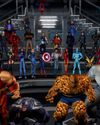
MARVEL: ULTIMATE ALLIANCE
Enter the multiverse of modness.
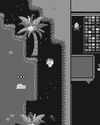
SLIDES RULE
Redeeming a hated puzzle mechanic with SLIDER
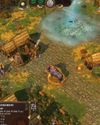
GODS AND MONSTERS
AGE OF MYTHOLOGY: RETOLD modernises a classic RTS with care

PHANTOM BLADE ZERO
Less Sekiro, more Wo Long: Fallen Dynasty

STARR-MAKING ROLE
Final Fantasy XVI's BEN STARR talks becoming a meme and dating summons

THIEF GOLD
Learning to forgive myself for knocking out every single guard.

HANDHELD GAMING PCs
In lieu of more powerful processors, handhelds are getting weirder
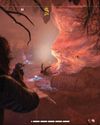
FAR FAR AWAY
STAR WARS OUTLAWS succeeds at the little things, but not much else shines
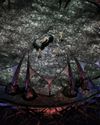
FINDING IMMORTALITY
Twenty-five years on, PLANESCAPE: TORMENT is still one of the most talked-about RPGs of all time. This is the story of how it was created as a ‘stay-busy’ project by a small team at Black Isle Studios